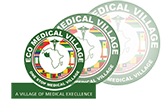ECO-SAVE FOUNDATION
An NGO which is the Social Responsibility arm of Eco-Medical Group Holding. Its aim is to educate kids that are in primary five to junior high 3 on life saving skills. This will assist in creating a nation of lifeguards in Ghana and in ECOWAS Region.
In Norway, 1 in 4 people survive, why?
Because CPR training is more widely taught in schools. Eco-Save will work with British Heart Foundation to train the kids on areas such as:
- Fainting.
- Recognize when someone
- How to respond appropriately to someone who faint or has fainted.
- Foreign Objects.
- Recognize when someone has a foreign object in their eye, ear or nose.
- How to respond appropriately to someone who has a foreign object in their eye, ear or nose.
- Check Pains.
- Recognize when someone is having a heart attack on an angma attack.
- How to respond appropriately to someone who is having a heart attack or angma attack.
- Coping in emergency and communication and casualty care.
- Creating an action plan to manage an
- Appreciate the importance of effective communication.
- Know how to make an emergency call.
- Heat exhaustion.
- Recognize when someone has heat exhaustion.
- Respond appropriately to someone who has heat exhaustion.
Other areas of training will include
- Poison
- Resuscitation
- Seizure
- Asthma attack
- Chocking
- Low blood
- Spinal injuries
- Baby unresponsiveness.
Eco-Save believes every person in Ghana should be able to perform basic First Aid and what better place to start but in the various schools!
Free CPR kits will be provided to schools for training.
A kit will consist of the following:
- Reusable inflatable mannequins.
- Keenly mats
- Red inflatable bags
- Practice – while – watching training DVDs
- 2 manual inflatable pumps
- Cleaning wipes
- Extra mannequins replacement parts
- All contained in handy carry bags
On training kits givers
- How and when to perform CPR on an adult or child
- Put someone is in a recovery position
- Use a public access defibrillation.




